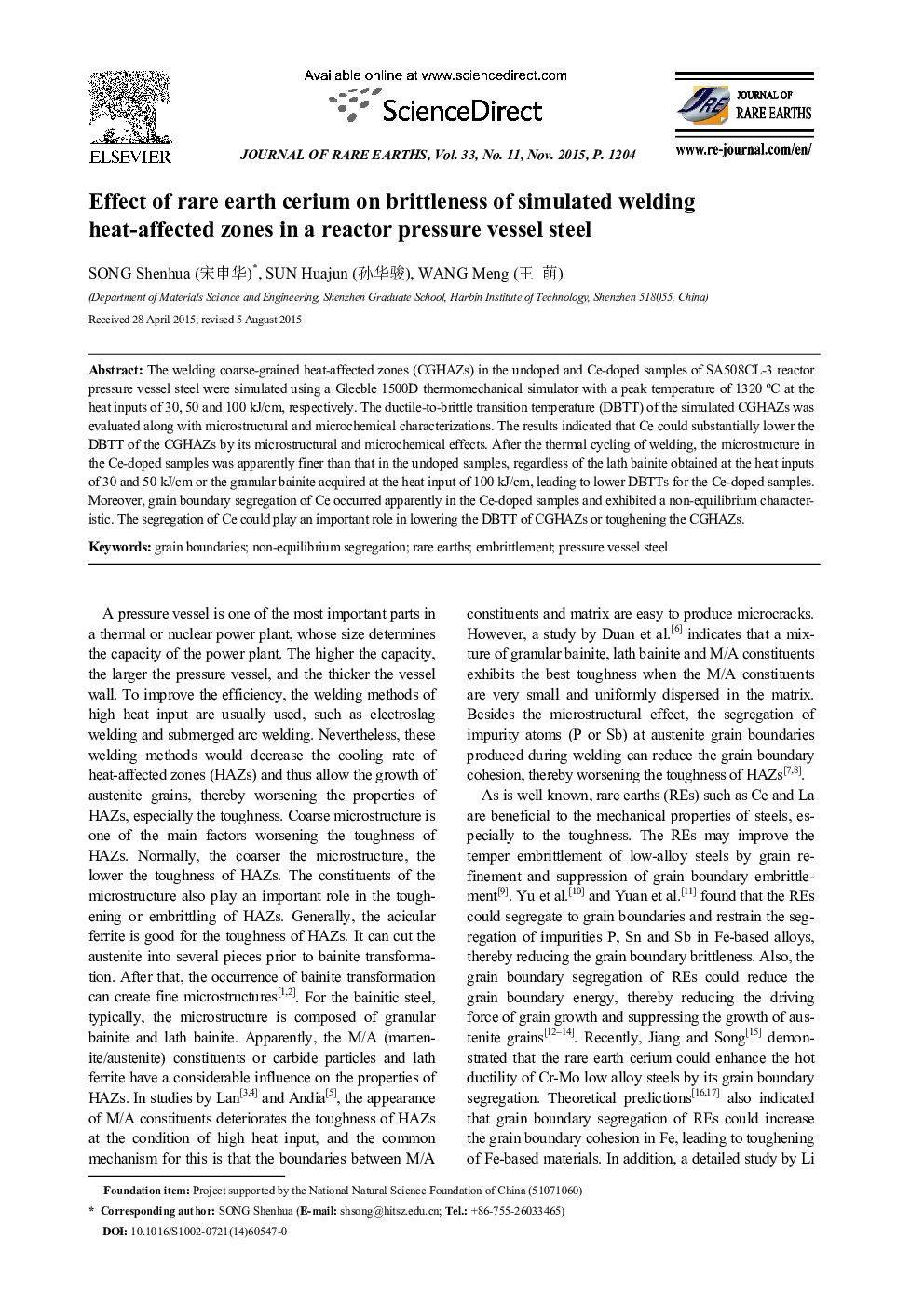| Article ID | Journal | Published Year | Pages | File Type |
|---|---|---|---|---|
| 1259892 | Journal of Rare Earths | 2015 | 8 Pages |
The welding coarse-grained heat-affected zones (CGHAZs) in the undoped and Ce-doped samples of SA508CL-3 reactor pressure vessel steel were simulated using a Gleeble 1500D thermomechanical simulator with a peak temperature of 1320 °C at the heat inputs of 30, 50 and 100 kJ/cm, respectively. The ductile-to-brittle transition temperature (DBTT) of the simulated CGHAZs was evaluated along with microstructural and microchemical characterizations. The results indicated that Ce could substantially lower the DBTT of the CGHAZs by its microstructural and microchemical effects. After the thermal cycling of welding, the microstructure in the Ce-doped samples was apparently finer than that in the undoped samples, regardless of the lath bainite obtained at the heat inputs of 30 and 50 kJ/cm or the granular bainite acquired at the heat input of 100 kJ/cm, leading to lower DBTTs for the Ce-doped samples. Moreover, grain boundary segregation of Ce occurred apparently in the Ce-doped samples and exhibited a non-equilibrium characteristic. The segregation of Ce could play an important role in lowering the DBTT of CGHAZs or toughening the CGHAZs.
Graphical AbstractDuctile-to-brittle transition temperatures (DBTTs) of the undoped and Ce-doped specimens thermally cycled with different heat inputsFigure optionsDownload full-size imageDownload as PowerPoint slide
